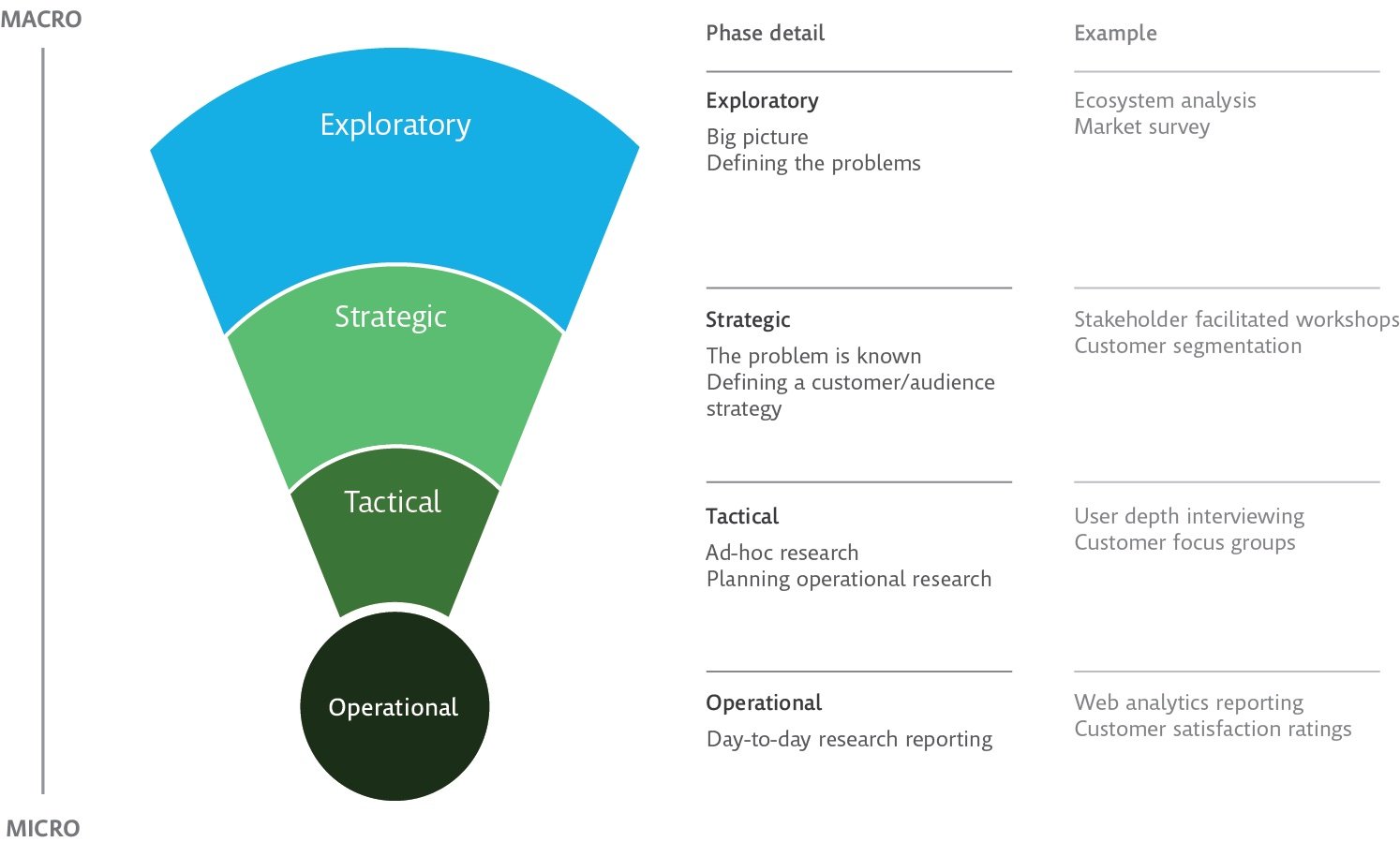The Research Funnel - iteration 2
Last year when I'd been in my job at Monotype a few months, I wrote about something I'd thrown together called the Research Funnel. Since then I've moved teams, been joined by a colleague and am now focusing on research across the whole of Monotype rather than just one business unit. When I first showed the funnel to my new colleague Dave, we decided that this could be a really useful tool for us to use as we talk to the different business units. We iterated upon it and it now looks like this.
As I wrote about previously, research should be designed to address a problem - either to solve it or to get closer to a solution. The funnel categories describe research as something that can and should happen at every stage of a product/project lifecycle. They describe how close you are to the problem or solution. At the top of the funnel you are furthest from the problem and at the bottom you are closest to the problem.
It also describes how broad the data collection should be - how wide or deep to go. The funnel isn't one way and research doesn't necessarily need to move through the stages in order. For example, insights from the bottom of the funnel can be dripped back into the top or middle of the funnel to inspire creativity, inform strategy or provide direction and tactics.
Much of the day to day research done in the web industry sits in the tactical and operational research categories and is often handled within product/production teams directly rather than centralised siloed research teams.
Tactical and operational research work really well in agile and 'everything all the time' workflows and in ongoing product development. Exploratory and strategic research work well in a 'discovery phase' in a waterfall workflow or at the start of a redesign or new project. You often can't do strategic or exploratory research without data gathered operationally though.
Whilst analytics give us a lot of detail, they need charting, tracking and interpreting to be useful. We need to think about what this builds into - how we join the dots into a bigger picture or strategy.
I believe that good research helps you to make good decisions. I think that research and experimentation should be a way of working and approaching design or content creation. Experimentation through research can bring a sense of playfulness and curiosity to your work. Research can bring you closer to solving the problem and meeting the needs of your users.

